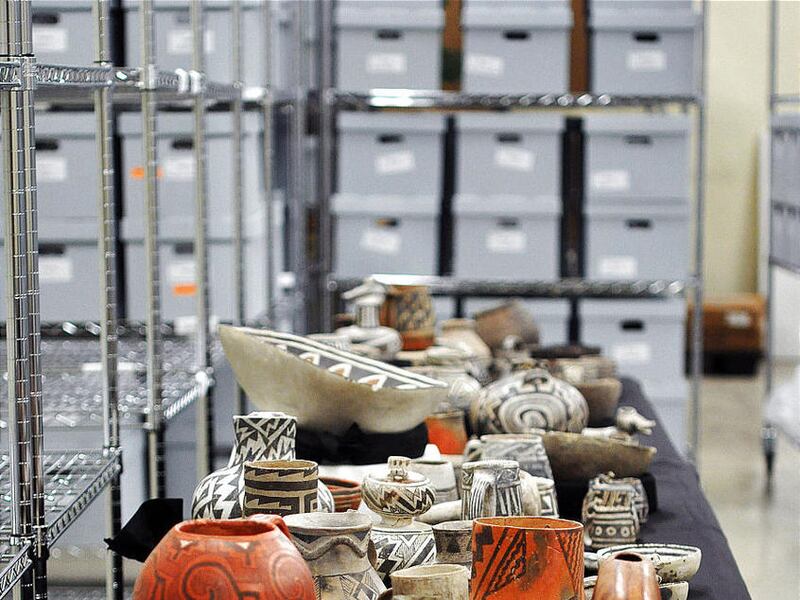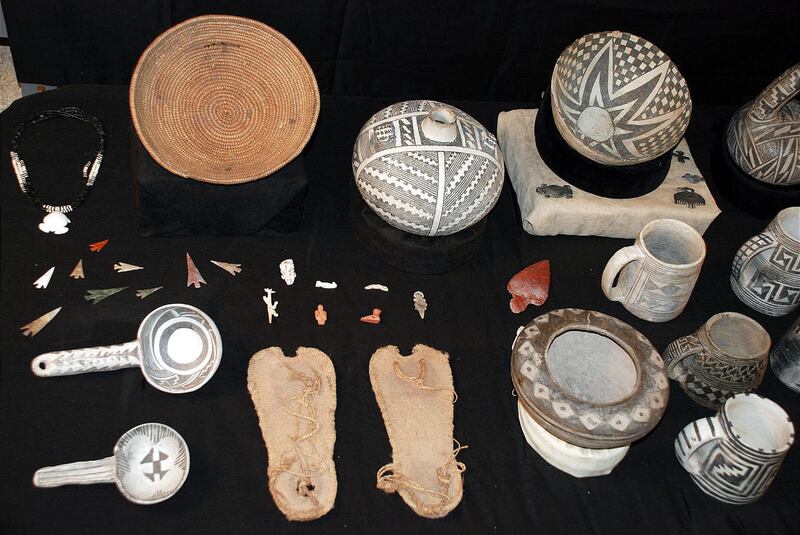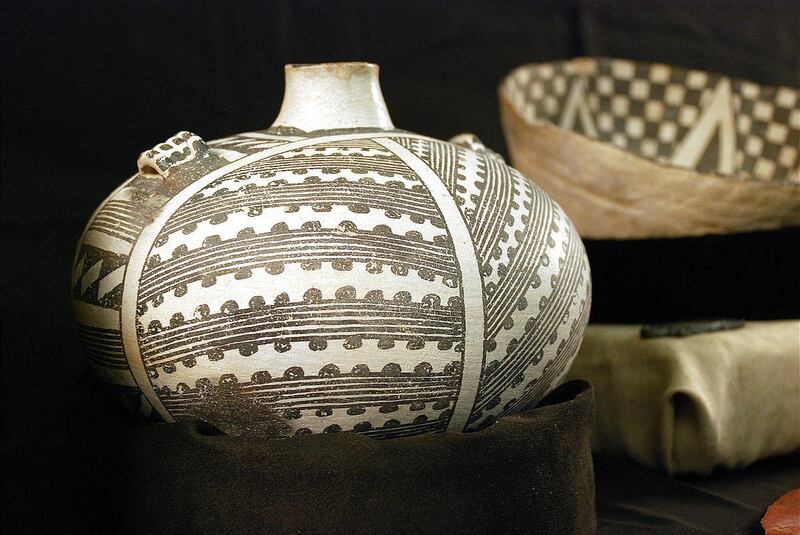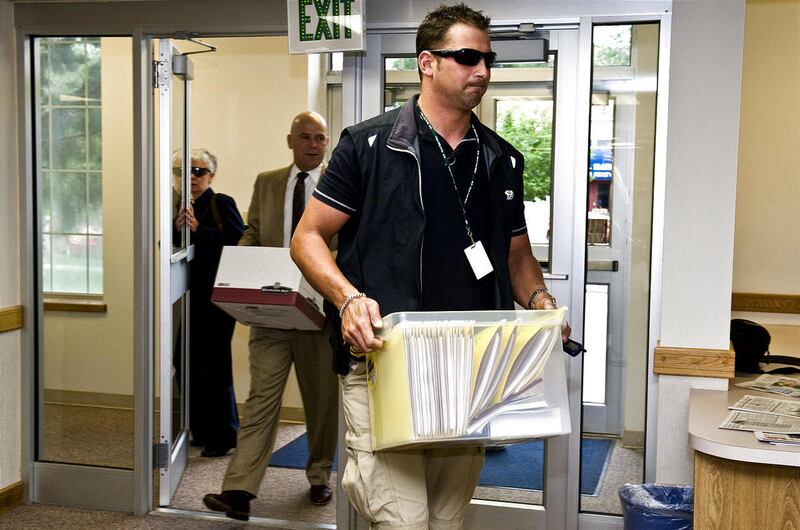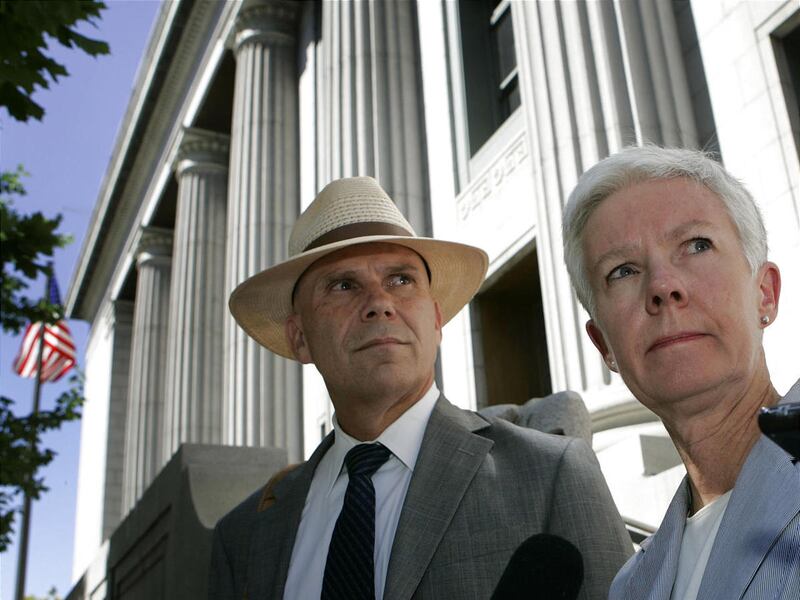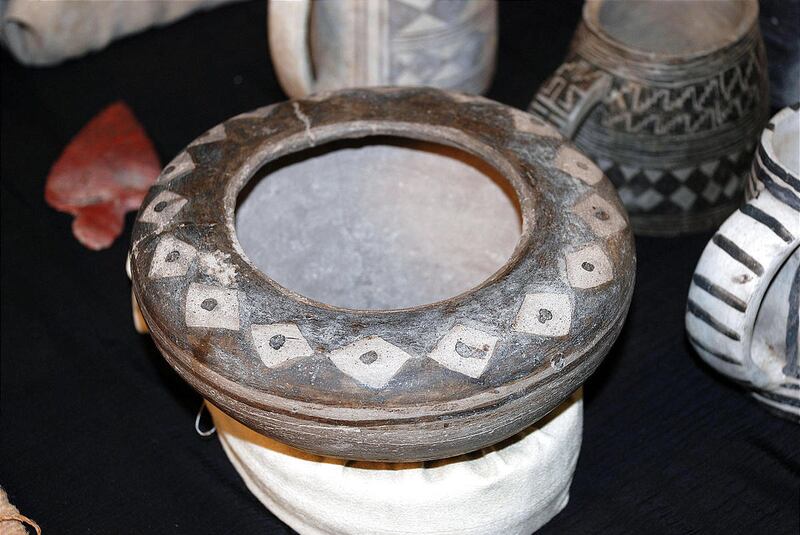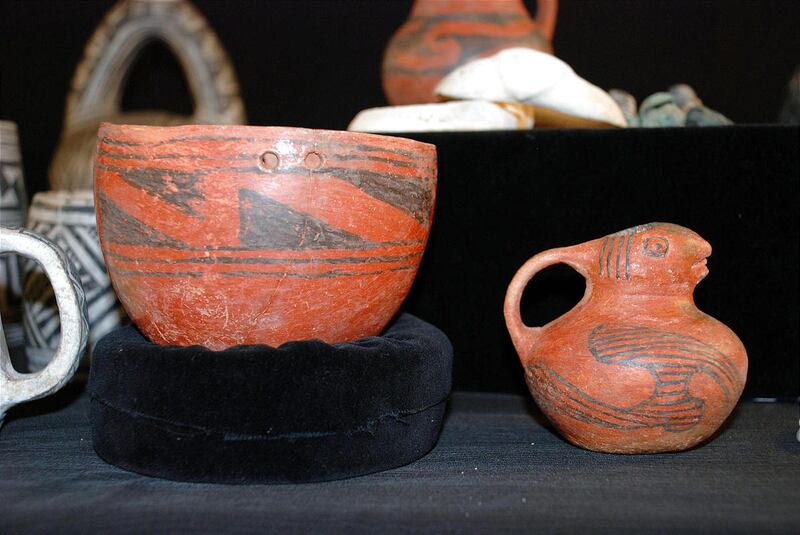SALT LAKE CITY — Against his better judgment, Richard Bourret agreed to join a friend on an archaeological dig at an asbestos dump in southeastern Utah.
Bourret told Vern Crites, a well-known Native American artifacts dealer in Durango, Colo., that it was a bad idea. He was relieved when Crites' "good friend" Ted initially called off the trip to San Juan County. But weeks later, Crites told him Ted had called several times and insisted they dig.
At the time, Bourret, 62, also of Durango, said in court documents, he thought no one would care about digging near a dump. It turned out to be a life-altering mistake.
Using shovels on that September 2008 day, he and Crites unearthed human remains, pottery sherds and a knife. Crites' friend Ted, the third member of their party, turned out to be Ted Gardiner, an undercover government informant.
Federal agents eventually arrested Bourret, Crites and two dozen others in the largest Indian artifacts trafficking
case in the country. Bourret and Crites pleaded guilty to a felony for illegal excavation.
Bourret was among the first defendants to reach a plea agreement, the latest being Blanding school teacher David A. Lacy who admitted last week to selling a turkey feather blanket and a prehistoric women's apron to Gardiner.
In all, FBI and Bureau of Land Management agents arrested 25 people in June 2009 after a nearly three-year undercover sting operation. To date, 21 have pleaded guilty to reduced charges related to digging, stealing, selling or trafficking in Native American antiquities. All were placed on some form of probation. Two cases are pending. Two defendants killed themselves.
And there could be more arrests.
BLM assistant special agent in charge Dan Love said the case remains active. Indictments in other states are pending, he said.
As the case winds down in Utah, sharp differences remain over whether it was worth it.
Too soft? Too harsh?
Critics call it costly overkill, in terms of tax dollars spent but more so in the lives it ruined. Three men — including Gardiner, the government informant — committed suicide. Some lost jobs, friendships and marriages.
And ultimately, no one went to prison.
"So that tells you what kind of case it really was," said San Juan County Commission Chairman Bruce Adams. "It was a property-rights case. It was not a high-profile criminal type case. … They did not hold anybody up. They did not point a gun at anybody. It was not armed robbery. Someone took someone else's property."
Some, like Crites, had vast artifacts collections and were deep into buying, selling and trading. Others like Bourret unwittingly joined a friend on an illegal dig.
"I realize that my actions have had a detrimental impact, and that what I did was a grave insult to many Native Americans," Bourret wrote before a federal judge sentenced him to 36 months probation. "To disturb cultural resources and disrespect one's cultural heritage, as I did, is very wrong."
Forrest Cuch, former state Division of Indian Affairs director, said he was impressed with how federal authorities apprehended and prosecuted the artifacts collectors.
But, he said, "I was very disappointed with the federal court rulings. I think they were far too soft on them. Some should have had jail time."
Federal authorities call the operation a success because it recovered illegally obtained Native American antiquities, raised public awareness and serves as a deterrent to so-called pot-hunters.
"I don't think we need to distance ourselves from those sentences," said U.S. Attorney for Utah Carlie Christensen. "I think given the facts and the circumstances where you look at the nature of the crime, you look at the deterrent effect, you look at their criminal history, I think the sentences they received were appropriate."
Six different federal judges handled the cases. And whether or not they talked among themselves, they were aware of each other's sentences and seemed to make a conscious effort to be consistent. Judge Ted Stewart remarked in one hearing that his sentence was in line with those handed down in other cases.
Salt Lake attorney and former BLM director Pat Shea suggested Utah Sen. Orrin Hatch might have pressured judges to see that none of the defendants serve prison time. Hatch, through a spokesman, denied the accusation.
"There's no truth to that whatsoever," said Mark Eddington, Hatch spokesman.
Lead federal prosecutor Richard McKelvie said the U.S. Attorney's Office for Utah never expected prison time for what amounted to property crimes.
"If we have a beef with a sentence, we can appeal it," he said. "Significantly, we haven't chosen to appeal any of the sentences here."
In addition to probation, those convicted of felonies give up the right to own guns or vote. All the defendants had to forfeit their artifacts collections, regardless of how they came to possess them.
That these were property crimes isn't lost on Adams.
"It was a property-rights case. It was not treated as a property-rights case in my opinion," he said. "Those folks were treated as if they were hardened criminals."
Archaeologist Jerry Spangler said looting is a big problem in rural communities and people are profiting from it. But, he said, it isn't taken seriously.
"We're losing our heritage at an alarming rate and there doesn't seem to be much impetus from the legal side of things to make the penalty such that it would deter people," he said. "That's part of the education problem we have. It is a serious crime."
Government informant
From the outset, the FBI and the BLM ran what they dubbed Operation Cerebus Action like a drug case, McKelvie said.
The agencies sent in an undercover informant, Ted Gardiner, a longtime artifacts dealer who ingratiated himself to collectors and traders over 2½ years.
Critics of the operation question Gardiner's credibility due to his history of drug, mental health and financial problems. McKelvie says although Gardiner had illicit dealings in the artifacts trade, he was never prosecuted and had no criminal charges against him when he became an informant.
Gardiner wore a wire and transmitted live video and audio to federal agents who monitored his transactions. He ultimately spent $335,685 on 358 items including pottery, blankets, ceremonial masks, sandals and jewelry. Authorities paid him $7,500 a month — $224,000 total — for his surreptitious work.
Dace Hyatt, a restoration expert from Show Low, Ariz., was scheduled to testify as an expert witness for a defendant in the case. He and other members of the Antique Tribal Art Dealers Association held a panel discussion on the artifacts case at a trade show in Santa Fe, N.M., last month.
A friend of Gardiner for nearly 20 years, Hyatt said federal authorities should not have relied on a person who had serious financial problems, which may have added pressure for him to create cases.
"In my opinion, he stooped to levels of misrepresenting the truth, embellishing and lying and that's unfortunate because you would think there would be more checks and balances within the (federal) departments to credit or discredit his statements before they orchestrated an entire 2½-year sting operation that cost the taxpayers — I would be willing to speculate millions of dollars — to only come up with 26 indictments. That's the travesty," Hyatt said.
Gardiner's son, Dustin Gardiner, has defended his father, saying he became disillusioned with the antiquities business when he saw the number of stolen items being sold. His father, he said, wanted to stop the digging and grave robbing and preserve history.
The raid
When it came time to make arrests, authorities, relying on Gardiner's information, stuck with the drug case game plan.
About 150 agents wearing bulletproof vests and armed with automatic weapons descended on homes in the Four Corners area on June 10, 2009. Agents searched the houses of suspected artifacts traffickers and placed people in handcuffs and shackles and drove them to face a federal magistrate in Moab.
Politicians like Adams, who said the FBI and BLM used "Gestapo" tactics, and others complained of heavy-handed treatment, especially when it came to people in their 70s.
Love said the BLM and FBI vetted each warrant beforehand and after hearing that some of those whom they planned to arrest had guns, took precautions to safeguard themselves and others.
"I would be hard-pressed to find any law enforcement officer across the country that when serving an arrest warrant or a search warrant isn't properly geared," he said.
Christensen said the raid was conducted so as not to tip off any of the targets, to keep people from destroying evidence and to prevent them from fleeing.
"This was a blueprint for how you do it," she said. "It was textbook."
Hatch, a vocal critic of the raid from the outset, didn't see it that way, and two years later still doesn't.
"I had concerns with the manner in which some federal officers, acting under the direction of the Department of Interior, conducted the search and arrest warrants in the operation that took place in San Juan County," the senator said. "I still believe that the operation was not handled as well as it should have been and was not representative of the cautious enforcement that I've come to expect from our federal law enforcement agencies."
Three suicides
Among the two dozen arrested that day was Dr. James Redd, a well-known Blanding doctor and longtime pot-hunter. The next day, the 60-year-old man connected a hose to the exhaust pipe of his car to asphyxiate himself.
His widow, Jeanne, said in a wrongful death suit filed in May, that FBI and BLM agents' "excessive, overreaching and abusive treatment" pushed her husband to suicide. She claims that agents "manhandled" her husband and interrogated him for hours in the garage.
But Love said it didn't appear that Dr. Redd had any animosity or anger toward authorities as a result of the investigation or the way he was treated that day. In fact, he said Redd shook his hand and thanked him for being treated with respect and dignity.
A month after Redd's death, one his former patients threatened to beat Gardiner with a baseball bat "to make the (undercover) source pay" for causing the doctor's death, according to court documents. Federal agents became aware of the threat and indicted Charles D. Armstrong. He was sentenced to a year in prison.
Ten days after the raid, another defendant, Stephen L. Shrader, shot himself to death.
Shrader, 56, was not arrested with the others. He read about the arrests in the newspaper and walked into the BLM office in Santa Fe, N.M., to tell authorities he knew of another person involved in trafficking: Ted Gardiner, the confidential informant.
Agents ultimately arrested Shrader on an outstanding warrant and charged him with allegedly taking an ancient pair of sandals and basket from public land.
McKelvie said while tragic, the deaths can't be connected to how agents treated the defendants.
"He was not arrested as part of the raid. He was not subject to a search. Nobody came into his house at 6 o'clock in the morning with guns and took him away," McKelvie said.
"If you look at the two suicides and try to couple them with the concept of jack-booted thugs kicking down doors at 6 in the morning and putting people in handcuffs, it was simply not the case. The fact that the suicides happened when they did really fed that kind of frenzy of the overreaching government."
In March 2010, Gardiner, 52, became the third person associated with the case to take his own life. According to a Unified Police Department report, he was upset over his involvement in the case and believed "he had killed two people."
San Juan County still has not regrouped from the deaths and the arrests, Adams said.
Federal authorities, he said, came into the raid with the notion, " 'We're going to scare the hell out of people.' Is that really the role of government? … That's what they did in (Nazi) Germany."
Residents in southeastern Utah remain suspicious of the FBI and BLM. Said Adams, "I don't think it will ever go away."
e-mail: romboy@desnews.com Twitter: dennisromboy


